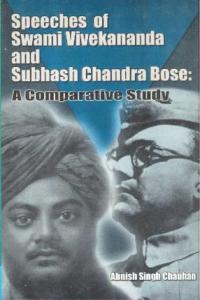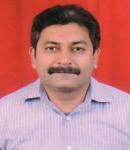Creation and Criticism
ISSN: 2455-9687
(A Quarterly International Peer-reviewed Refereed e-Journal
Devoted to English Language and Literature)
Vol. 01, Issue 03 : Oct 2016

Speeches of Swami Vivekananda and Subhash Chandra Bose: A Comparative Study by Abnish Singh Chauhan
Abnish Singh Chauhan. Speeches of Swami Vivekananda and Subhash Chandra Bose: A Comparative Study. Bareilly: Prakash Book Depot, 2006. Pp. 118. Price: Rs. 200/- ISBN: 978-8179771490.
Reviewed by Sudhir K. Arora
Abnish Singh Chauhan’s Speeches of Swami Vivekananda and Subhash Chandra Bose: A Comparative Study deciphers the speeches of Swami Vivekananda and Subhash Chandra Bose to trace out the thought patterns, revealed through the language, and thus to find out the points of similarities and dissimilarities for the final evaluation without harming the reputation of the two.
‘Introduction’ introduces the term ‘rhetoric’ in detail, and peeps into Swami Vivekananda’s and Subhash Chandra Bose’s biographical details that paved the way for their magical art of oratory. The chapter ‘Cultural Awareness and Patriotism’ reveals Swami Vivekananda as the representative of “the very soul of Hinduism and its spiritual grandeur”, and highlights him as the preacher of tolerance, equality and cooperation among the people of all faiths. It also demonstrates the various phases of Indian patriotism including religious movements, cultural awareness, and the birth and the journey of Indian National Congress. History of freedom movement is incomplete without the contribution of Subhash Chandra Bose who, as a freedom fighter, filled the confidence and vigour among the Indians and, thus, shook the very foundation of the British imperialism. The chapter ‘Analysis of the Use of Spiritual Power and Physical / Military Power’ analyses the spiritual power in Vivekananda and military power in Subhash Chandra Bose and also reflects over the use of these powers in making them the symbol of service to the humanity, and the symbol of flaming patriotism and dynamism respectively. Both of them were rational enough to have understanding and a grasp over the situation. Both travelled the foreign lands and shared the problems of India on the international scene. They differed in mediums but shared the same goal—the upliftment of the motherland. The endeavours of I. N. A. to make India free and the clarion call for unity, faith and sacrifice reflect Bose’s boldness and organisational skill. While appreciating Bose, the author writes: “Morally, spiritually and intellectually, he walked into the steps of Swami Vivekananda, in statesmanship, administrative ability and catholicity of outlook, he worked like Akbar, but above all in leadership and as a military genius he fought like Shivaji.” The chapter ‘Use of Language’ demonstrates the art of oratory, revealed in language and style. Swami Vivekananda proved his oratorical skill and literary art in the Chicago address. His selection of words is excellent and balanced. His sentences are fused with “explanatory clauses, musical phrases, specific clichés and denotative words.” Shubhash Chandra Bose uses electrifying language to exhort the masses. Appropriate phraseology, idiomatic expression and the right choice of words mark his discourses which become quite familiar, emphatic and persuasive. While writing on the language of Subhash Chandra Bose, the author writes: “His sentences don’t have so much of compact finish as those of Swami Vivekananda, yet they are noteworthy...He often prefers a lose structure. His sentences contain words, phrases and clauses in formal balance.” He binds circumstances with effective words in the style which reveals the tone of patriotic mobilization that impresses the masses. The chapter ‘Conclusion’ sums up the ideas, expressed in the previous chapters.
The book is in hardbound with affordable cost. It is a real contribution in the field of knowledge regarding the speeches of Swami Vivekananda and Subhash Chandra Bose. It will inspire scholars, teachers, and even general readers to make a further study on the two great men of India. It gives a satisfying pleasure to the reader who cannot help without appreciating the excellent and convincing way of the narration of the author. Kudos to the author Abnish Singh Chauhan for making the comparative study in such an authentic manner and the publisher, Prakash Book Depot for bringing the book at such affordable price.
 The Reviewer:
The Reviewer:
Dr Sudhir K. Arora (b.1968) teaches English at Maharaja Harishchandra P. G. College, Moradabad affiliated to M. J. P. Rohilkhand University, Bareilly. He has several significant publications to his credit including Aravind Adiga’s The White Tiger: A Freakish Booker and Cultural and Philosophical Reflections in Indian Poetry in English in Five Volumes.


